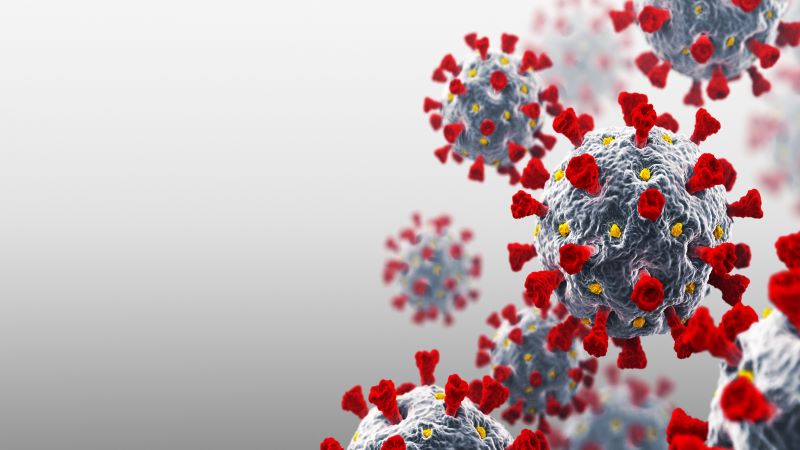New Research Confirms Higher Rates of New Coronavirus in Latinx Populations
06/23/2020

In a new analysis of SARS-CoV-2, the virus that causes COVID-19, test results for nearly 38,000 people has found a positivity rate among Latinx populations about three times higher than for any other racial and ethnic group. The findings, published June 18 in the Journal of the American Medical Association (JAMA), add to evidence that there are much higher COVID-19 infection rates among U.S. minorities, particularly in Latinx communities.
Researchers from the Johns Hopkins Center for Data Science in Emergency Medicine and the Johns Hopkins University School of Medicine’s Department of Emergency Medicine and Division of Infectious Diseases collaborated on the study.
“We suspected socially and economically marginalized groups were being heavily impacted by COVID-19,” says Diego A. Martinez, Ph.D., assistant professor of emergency medicine at the Johns Hopkins University School of Medicine, and one of the study report’s authors. “Our study is believed to be among the first in measuring such differences in a diverse region.”
The researchers concluded that crowded living conditions and continuous working at jobs due to economic necessity and essential worker status contributed to the higher rate of positive tests in the Latinx community.
“It is clear that the systematic exclusion of this population from health care services has contributed to the disparities we see today,” says Kathleen R. Page, M.D., associate professor of medicine at the Johns Hopkins University School of Medicine, and a study member, who also cared for many of the patients. “This pandemic has taught us that we are all interconnected. At the very least, we must engage with communities early and provide language and culturally appropriate information and services, removing as many barriers to care as possible.”
The investigators analyzed results of diagnostic tests performed between March 11 and May 25 across five Johns Hopkins Health System hospitals, including emergency departments and 30 outpatient clinics in the Baltimore-Washington area.
Out of 37,727 adults and children tested, 6,162 tests came back positive. Of those tests, the positivity rate for Latinx was 42.6%, significantly higher than those who identified as Black (17.6%); Other (17.2%); or white (8.8%). Overall, about half of those Latinx who tested positive were women and half were men, and most (61.5%) were between the ages of 18 and 44.
The study also found that the number of positive cases in each group peaked at different times: Latinx patient cases peaked later in the study period, on May 10 at 53.4%, compared with Black patients, among whom cases peaked on April 19 (29.6%), and white patients, on April 16 (16.1%). Researchers say that as testing volume in Maryland increased for all racial and ethnic groups, positivity rates declined.
Among those who tested positive, 2,212 were admitted to a Johns Hopkins Health System hospital. The study data show that Latinx patients were less likely to be admitted to the hospital (29.1%) compared with Black (41.7%) and white (40.1%) patients. Of the patients who were hospitalized, Latinx patients were younger (18 to 44 years); more likely to be male (64.9%); and had much lower rates of comorbidities, such as hypertension (44.8%), congestive heart failure (41.1%), pulmonary disease (20.7%) and chronic obstructive pulmonary disease (COPD) (19.2%) than Black or white patients. Eighty-two percent of Black patients and 70.4% of white patients had hypertension; 56.1% of Black patients and 56.6% of white patients had congestive heart failure; 32.9% of Black patients and 33.9% of white patients had pulmonary disease; and 27.9% of Black patients and 30% of white patients had COPD. However, more Black patients had diabetes (52.8%), compared with Latinx (32.8%) and white (29.6%) patients.
Page calls the findings “staggering.” She says that a majority of the Latinx patients are often immigrants with limited English proficiency who work in low-wage, essential jobs, such as construction and cleaning. “Many of these patients tell me they delayed coming to the hospital until absolutely necessary because they were worried about medical bills, and were not sure if they could receive care because of their immigration status,” she says. “Most of the patients I've met are not eligible for benefits, have no health insurance, and rent rooms in crowded houses. The need to work, lack of occupational protections and crowded living conditions have led to high transmission in this community.”
While the Baltimore-Washington area represents a small subsection of the Latinx community, researchers suspect similar health disparities will be found elsewhere around the nation, but their degree and causes might differ — depending on the region. “Knowing what is driving these health disparities in each region is much-needed evidence to develop tailored policies and interventions to better serve all of our people,” Martinez says.
The researchers say their data are already informing practices and planning across the Johns Hopkins Health System, and they hope their findings lead to changes elsewhere to mitigate the spread of COVID-19 in minority populations. “Protecting Latinx individuals, building trust and reducing barriers to engagement in public health initiatives, such as providing equal protection for workers; reducing the threat of deportation; and performing charity care for those unable to afford health care and, should be essential as our nation grapples with strategies to contain the impact of COVID-19,” Martinez says. He adds that local health officials will likely see higher success by engaging community-based organizations, such as churches, which have experience addressing concerns of the vulnerable Latinx population.
Other researchers who worked on this study include Jeremiah S. Hinson, M.D., Ph.D., Eili Y. Klein, Ph.D., Nathan A. Irvin, M.D., Mustapha Saheed, M.D., and Scott R. Levin, Ph.D.
Martinez reported support from the Johns Hopkins Health System. Martinez, Hinson, Klein and Levin reported receiving grant support from the Agency for Healthcare Research and Quality (AHRQ) and the Centers for Disease Control and Prevention (CDC).
